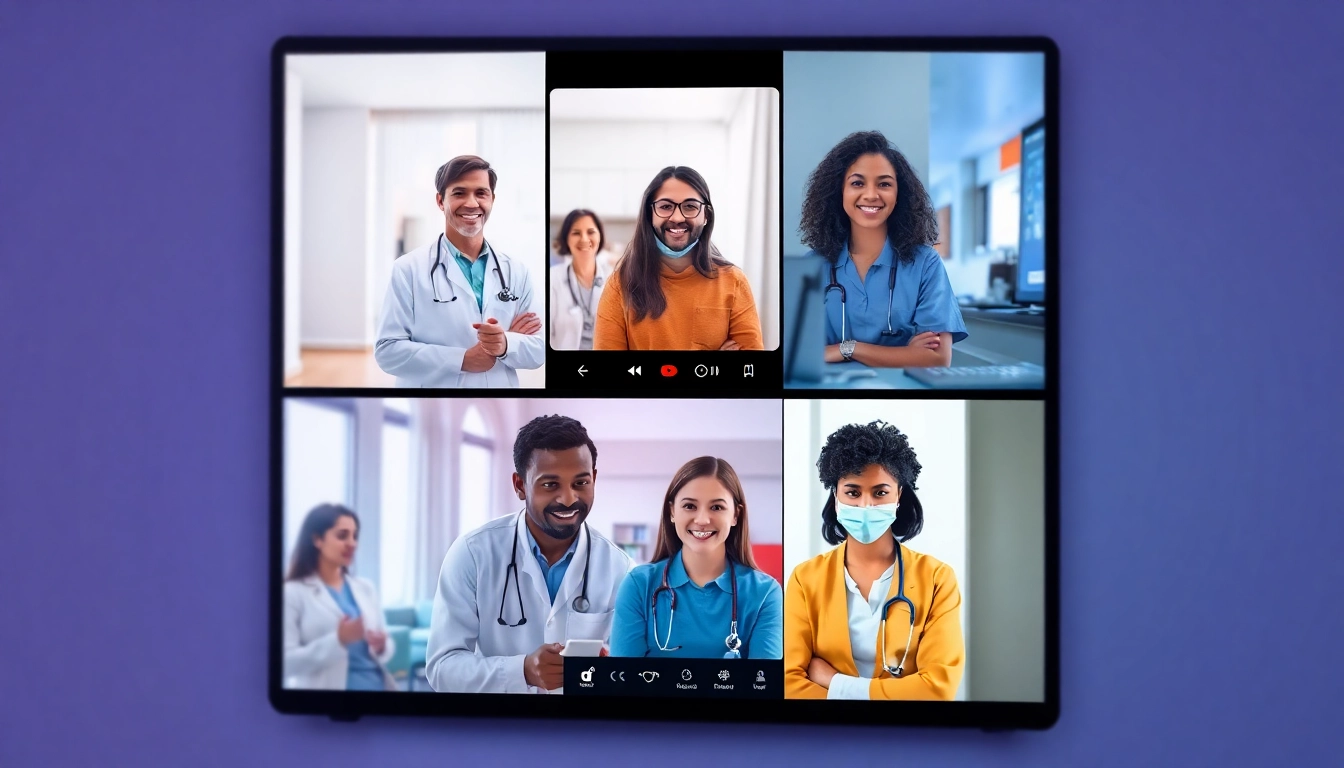Understanding Virtual Shadowing Experiences
Virtual shadowing experiences have gained considerable traction in recent years as a viable alternative to traditional in-person shadowing. For aspiring healthcare professionals, these experiences provide a unique opportunity to learn about the medical field from the comfort of their own homes. Unlike traditional shadowing, where students accompany healthcare providers during their daily activities, virtual shadowing utilizes technology to connect students with professionals. This natural evolution in learning allows a wider audience to gain valuable insights into healthcare careers without geographical limitations. To explore the various facets of this innovative approach, one can start by examining virtual shadowing experiences in detail.
What is Virtual Shadowing?
Virtual shadowing refers to remote job shadowing conducted through digital platforms, enabling students to observe healthcare professionals in real-time or through recorded sessions. In essence, students watch as experienced practitioners engage with patients, discuss ailments, and make clinical decisions, all while offering commentary on their thought processes. As the world becomes increasingly digital, the medical field has embraced this approach, creating opportunities for students to learn in a safe and flexible environment.
This format has many advantages over traditional shadowing. It allows the participant to explore various specialties, ask questions, and interact with multiple healthcare professionals, all while being in a remote setting. For pre-med students, virtual shadowing is not just an alternative but a means of gaining insights into the healthcare industry that might have been previously inaccessible.
The Importance of Virtual Shadowing in Healthcare
The significance of virtual shadowing cannot be understated. For one, it democratizes access to healthcare education, allowing students from diverse backgrounds to experience the medical field. Students who may have faced barriers to entry, such as geographic limitations or scheduling conflicts, can now explore healthcare careers and specialties that they might not have otherwise considered.
Moreover, virtual shadowing serves as an essential component of career readiness. As students engage with healthcare professionals, they gain firsthand insight into patient interactions, clinical practices, and the day-to-day realities of being a medical provider. This exposure is invaluable not only for building a solid knowledge base but also for enhancing communication and interpersonal skills that are crucial in the medical field.
How Virtual Shadowing Differs from Traditional Shadowing
While both virtual and traditional shadowing provide students with the opportunity to observe and learn, there are fundamental differences between the two. Traditional shadowing typically requires students to physically accompany a healthcare professional during rounds, patient consultations, or surgeries. This format promotes direct interaction and visibility into clinical settings.
Conversely, virtual shadowing offers a more flexible schedule, allowing students to attend sessions that fit their availability. In addition, the digital format facilitates exposure to a wider array of specialties, often providing more diverse learning opportunities. For example, a student interested in various fields can join multiple sessions with different practitioners, enjoying the flexibility to switch specialties without the constraints of time and travel.
Benefits of Participating in Virtual Shadowing Experiences
Gaining Insight into Different Medical Specialties
One of the most notable benefits of virtual shadowing experiences is the opportunity to gain insight into a range of specialties. Students can observe how different medical fields operate, allowing them to make informed decisions regarding their future careers. For instance, a student might gain exposure to fields like surgery, pediatrics, internal medicine, or even psychiatry through a combination of sessions.
This diversification can help students discover specialties that align with their personal interests or strengths. Furthermore, by witnessing direct patient interactions and clinical decision-making in various settings, participants can better understand what it means to work in each specialty and how it fits into the broader healthcare ecosystem.
Flexibility and Accessibility of Virtual Programs
Flexibility is a key advantage of virtual shadowing programs. Students can attend sessions held at different times and on various days, making participation possible even for those balancing coursework, jobs, or other commitments. Sessions can be accessed from anywhere with an internet connection, effectively eliminating geographical barriers.
This increased accessibility ensures that students from all backgrounds have exposure to the healthcare industry, fostering a more inclusive environment. Additionally, many platforms offer recorded sessions, enabling students to revisit content and enhance their understanding long after the original experience has concluded.
Opportunities for Networking with Healthcare Professionals
Virtual shadowing experiences also present valuable networking opportunities. Participants can engage directly with healthcare professionals, often during Q&A sessions or informal discussions. Building relationships with mentors can be beneficial not only for gaining insights but also for future reference and recommendations as students navigate their educational paths.
Networking is essential in any field, especially in healthcare, where relationships can open doors for internships, job placements, and valuable learning experiences. By engaging with a variety of practitioners, students can develop a network of contacts that will serve them well throughout their careers.
How to Make the Most of Virtual Shadowing Experiences
Preparing for Your Virtual Shadowing Session
To make the most of a virtual shadowing experience, preparation is critical. Students should start by researching the healthcare professionals they will be observing. Familiarizing oneself with their background, specialties, and general practices will allow for deeper engagement and more informed questions.
In addition, students should ensure they have a quiet, comfortable space set up with reliable technology to minimize distractions and technical issues during the session. It’s also helpful to prepare questions ahead of time to maximize the time spent with professionals—asking thoughtful questions can lead to deeper discussions and clearer job insights.
Best Practices for Engaging with Shadowing Professionals
Engagement is essential during virtual shadowing sessions. Students should actively participate by asking questions and conveying their interest in what the professionals are discussing. Body language, even in a virtual format, matters; maintaining eye contact (through the camera) and nodding in response to affirm understanding can enhance communication.
Additionally, showing gratitude at the end of the session is important. Sending a follow-up thank-you email not only acknowledges the professional’s time but also reinforces the student’s interest in the field, laying the groundwork for a lasting professional relationship.
After the Session: Reflecting on Your Experience
Once a virtual shadowing session is complete, reflection plays a crucial role in solidifying the experience. Students should take time to journal about what they learned, the skills they observed, and how their perceptions of the healthcare industry might have changed. Reflective writing helps in processing the new knowledge gained and will also improve articulation of these experiences during future interviews or applications.
Moreover, drawing connections between a shadowing experience and educational or career goals can aid in creating a comprehensive plan for pursuing a desired specialty in the future. This reflection is not only a tool for personal growth but also a stepping stone in shaping one’s career path.
Challenges and Considerations in Virtual Shadowing Experiences
Recognizing Limitations Compared to In-Person Shadowing
Although virtual shadowing offers many advantages, it’s essential to recognize its limitations compared to in-person experiences. For example, students miss out on the tactile aspects of shadowing, such as observing hands-on techniques and experiencing the hospital environment firsthand. This lack of exposure could lead to gaps in understanding the realities of medical practice.
Furthermore, virtual shadowing cannot replicate the nuances and complexities of patient interactions fully. In-person shadowing allows for a visceral understanding of patient care that virtual sessions might not adequately convey. Thus, while virtual opportunities are invaluable, they should be viewed as supplemental experiences rather than a complete substitute.
Technical Obstacles: Ensuring Smooth Connections
Technical challenges can emerge during virtual shadowing sessions, such as poor internet connectivity, software malfunctions, or unfamiliarity with the platform. Students should ensure they have a reliable internet connection and be familiar with the software being used prior to attending the session.
To mitigate any potential disruptions, running a test session or participating in a technical orientation can provide students with the confidence needed to navigate the platform effectively during their actual shadowing experiences.
Evaluating the Value of Virtual Shadowing in Applications
As more students participate in virtual shadowing, questions arise concerning its weight in application materials. While many medical schools and healthcare programs acknowledge virtual shadowing experiences, they may not be valued equally to in-person shadowing due to the lack of direct patient care interaction. Admissions committees often prioritize experiences that demonstrate hands-on skills or direct patient involvement.
Students seeking to showcase their virtual shadowing experiences should emphasize their reflective insights and the specific knowledge gained. Additionally, complementing virtual shadowing with in-person experiences or internships could better strengthen overall applications.
Finding Quality Virtual Shadowing Experiences
Top Platforms Offering Virtual Shadowing Programs
Several reputable platforms provide virtual shadowing programs designed to connect aspiring healthcare professionals with experienced practitioners. Websites like Virtual Shadowing, MedSchoolCoach, and Pre-Health Shadowing offer structured programs that enhance learning through a series of interactive sessions. Each platform typically specializes in different medical fields, making it essential for students to do their research and find one that aligns with their interests.
It’s also important to verify certifications or affiliations with recognized medical institutions, ensuring that students receive valuable and credible experiences. Reading reviews and testimonials can provide further insight into the quality of these programs and their overall effectiveness.
What to Look for in a Virtual Shadowing Program
When searching for the ideal virtual shadowing program, students should consider a few key factors. Look for platforms that offer a variety of specialties, as this diversity can enhance exposure to different facets of healthcare. Additionally, programs that incorporate interactive segments, such as Q&A sessions or small group discussions, can increase engagement and provide a richer learning experience.
Furthermore, check for the availability of recorded sessions, which allow students to review content at their convenience. This flexibility ensures that students can absorb the material effectively without feeling rushed. Lastly, consider platforms that offer mentorship opportunities; establishing connections with professionals can be beneficial for networking and future career guidance.
Testimonials and Experiences from Past Participants
Testimonials can offer invaluable insight into the effectiveness of virtual shadowing programs. Past participants often share their experiences regarding the quality of instruction, the interactivity of sessions, and how the shadowing experiences have influenced their career decisions. Seeking out feedback through social media, forums, or the program’s website can aid in making informed choices about which programs to pursue.
Additionally, connecting with alumni from virtual shadowing programs can provide prospective participants with firsthand accounts of their experiences and insights that might not be available through formal testimonials.



